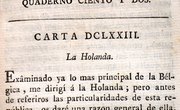High school students don't always see the value in learning about figurative language. However, not only is understanding figurative language essential for poetry interpretation, but figures of speech are also widely used across genres, including in song. Make the lessons on figurative language fun but also relevant to high school students' lives.
Identification
Students first must learn key figures of speech such as simile, metaphor, personification and symbolism. Make a chart for students to copy that has enough columns for the terms you teach and several rows to record examples. Read aloud a poem that has obvious examples of figurative language, such as "Mother to Son" by Langston Hughes. Identify the examples and copy them onto the chart, having the students do the same. Have students search out other examples to include in their charts, either on their own or using poems that you provide.
Practice
Worksheets offer students opportunities to practice identifying figurative language. The E-Reading website offers several. In the early stages, the worksheets guide high school students through identifying examples, also instructing them to explain how they "figured" it out. In addition, the website includes lessons geared toward specific texts such as "Lord of the Flies" and authors such as Shakespeare and O. Henry. These lessons culminate in an interactive figurative language game during which the students review examples of figurative language.
Activities
Once high school students learn the basics of figurative language, encourage them to play with their new knowledge. One review game is "Trashketball:" students answer questions about the target concept and shoot their correct answers into a trash can. A quieter activity for students is a figurative language scavenger hunt: students break up into teams and hunt through books of poetry for examples of the figures of speech; make the activity competitive for fun. Throughout the unit, have students create a figurative language scrapbook for which they collect examples of figurative language and match them with images cut from magazines.
Songs
Ultimately, high school students need to connect learning to their lives, or the new knowledge will never stick. Teenagers love music, and yet they seldom realize that songs are poems put to music. Introduce them to that concept by choosing a song, such as Katy Perry's "Firework," that features examples of figurative language. Let them listen to the song; provide them with copies of the lyrics so that they can find the similes, symbolism and other figures of speech. Encourage the students to bring in school-appropriate versions of their own music so that they can share more examples of figurative language in their lives.
Related Articles
References
Writer Bio
Nadia Archuleta has a B.A. in English writing. She spent five years working abroad and has traveled extensively. She has worked as an English as a Foreign/Second Language teacher for 12 years.











